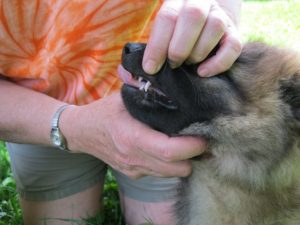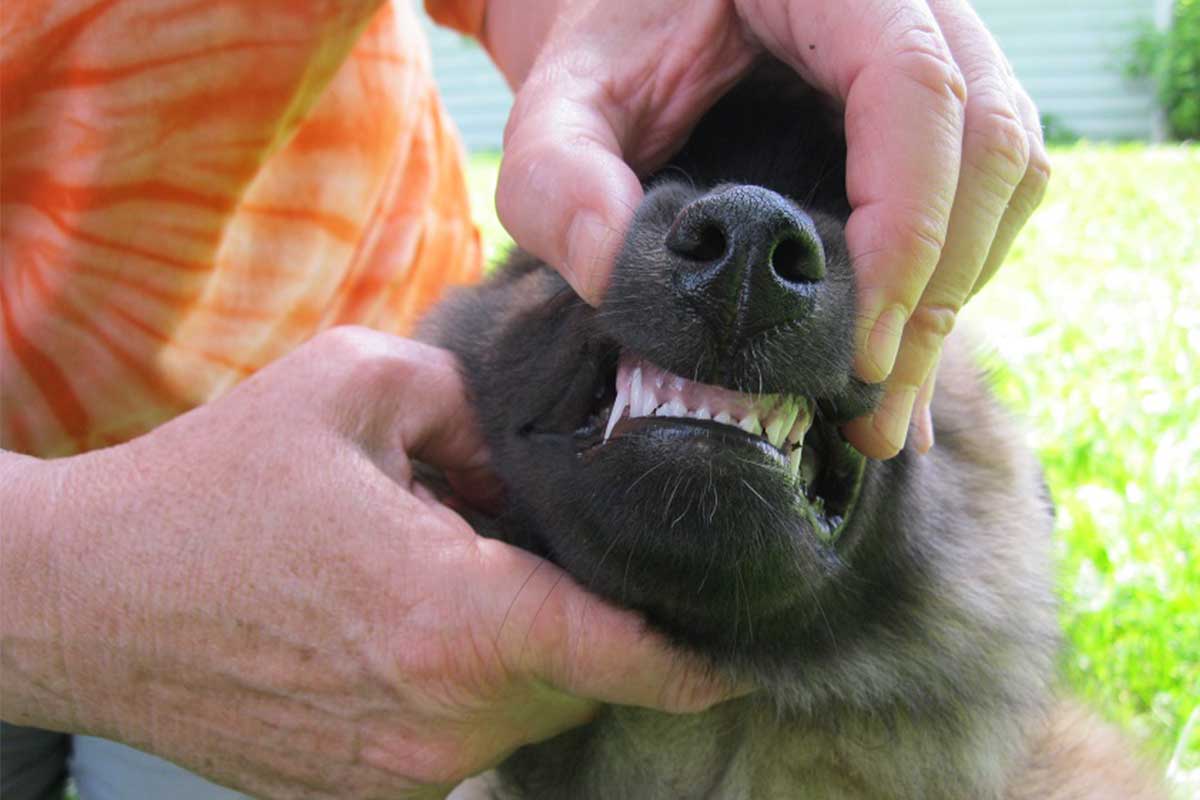Every time your puppy or dog visits the veterinary hospital, he will get an oral exam. From looking at your dog’s mouth, your veterinarian can collect quite a bit of information.
From this quick exam, your veterinarian will look at your dog’s teeth, his bite (alignment for those of you having dealt with orthodontia), his gum color, his hydration and any possible growths present. A tooth exam looks for broken or discolored teeth and plaque buildup. A poor bite in a puppy might require teeth being pulled or the canine version of braces. Gum color can indicate anemia, liver disease, poor perfusion or certain toxins. With good hydration, the gums and mouth are moist. Any growths can be checked to see if they need an aspirate or biopsy. With all of that information on the line, you want your dog to be comfortable so your veterinarian can do a good oral exam.
 Food is usually the key to training your dog for an oral exam. Start by simply lifting up a lip a bit. Lift, treat. If you use a clicker you might do lift, click, and treat. Practice this on both sides plus in front. You can start this training with a young puppy though be very gentle or skip training around 4 to 6 months when your pup is teething. His mouth may be uncomfortable. Some dogs will actually pick up on this game and lift their lip on their own but most wait for you. If he does it himself the dog should be relaxed– not like a dog snarling and curling his lip with fear or aggression.
Food is usually the key to training your dog for an oral exam. Start by simply lifting up a lip a bit. Lift, treat. If you use a clicker you might do lift, click, and treat. Practice this on both sides plus in front. You can start this training with a young puppy though be very gentle or skip training around 4 to 6 months when your pup is teething. His mouth may be uncomfortable. Some dogs will actually pick up on this game and lift their lip on their own but most wait for you. If he does it himself the dog should be relaxed– not like a dog snarling and curling his lip with fear or aggression.
The next step will be actually opening the mouth. The easiest way to do this is to put your hand over the muzzle and gently squeeze behind the upper canine teeth.
With the pressure on the lips, most dogs will open their mouths. You may need to use your other hand to gently pull the lower jaw down.
Once you have opened the mouth, treat your dog while praising him. Start by just barely opening the mouth, but gradually progress to opening the mouth a bit wider.
A little practice at home will make your dog much more at ease when your veterinarian needs to do an oral exam!
This article was reviewed/edited by board-certified veterinary behaviorist Dr. Kenneth Martin and/or veterinary technician specialist in behavior Debbie Martin, LVT.








